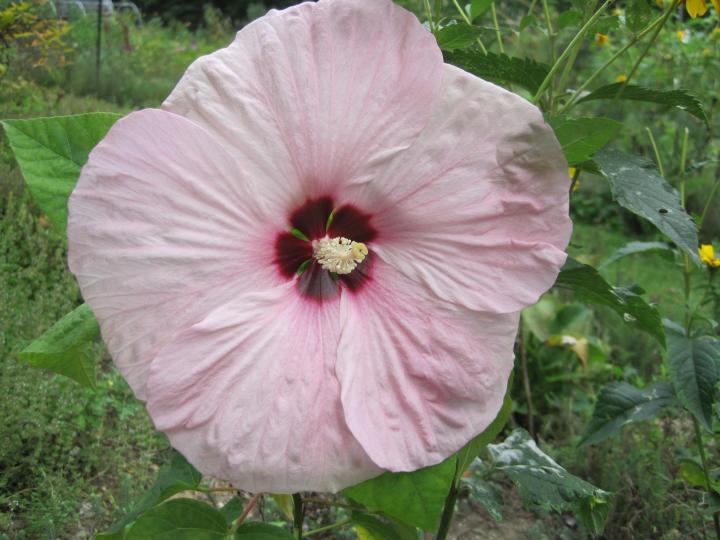
Planting Rose of Sharon & Other Hibiscus Flowers

Fall Flowers and Foliage
Fall Vegetable Gardening
Fall Garden Cleanup
Garden Soil Preparation
Fall Nature
ADVERTISEMENT
When you say full sun, would that be morning sun or afternoon sun? Afternoon is much fiercer than morning and some plants cannot tolerate harsh afternoon sun.
An established shrub can take full afternoon sun, but freshly planted ones should be monitored and watered adequately if planted in full afternoon sun.
I also have some Brugs that are new to me and this is their 2nd year. Two of them have not bloomed yet for me. For one of my 2nd year Brugs I finally have multiple blooms growing ghis year. I am so excited. I also was able to purchase a new Brug from a nursery and it also multiple flowered for me. They were all treated the same and all had the same amount of sun. I really think it's the luck of the draw. We'll see what happens next year.
PS all of my brugs are in large pots and I bring them inside for winter. I live in Nova Scotia
My Rose of Sharon shrubs, I have three in a row, are at least twenty feet tall, and profusely bloom mid-July through August, by mid September the last few blooms stop. So never have they bloomed a single flower in Autumn. I would also add, that I too have a trumpet vine, as the first commenter, that was given to me twenty years ago at least, that is so invasive, it has shoots coming up every where. I can not rid my property of it, nor chop it down, without it coming back even more aggressive. Here in lies the rub; it, nor any of the hundreds of offshoots, have ever bloomed one trumpet flower, ever. So, there must be something too this, issue of non flowering trumpet vines. I can not find, any solution, that will work, and make them flower.
My two rose of sharon trees struggle yearly to bloom. They were pruned into tree shape since I got them five years ago. I've kept the shape and tried pruning down to a couple buds in early spring to keep them small and perhaps get the buds to open by having less of them. But the tree grows four or more feet even after pruning. The flowers are doubles, which makes them very heavy when they don't open. Each year, a few more will open, but it's still mostly closed buds. This season, I skipped pruning and will see what happens. My hardy hibiscus, however, is ten years old and sits in the center of my front garden. Now at its full size, it's about 4 ft by 4 ft each summer by the time blooms form. Pretty much zero maintenance. Cut it to the ground after the first freeze, remove some of the faded blooms to keep it pretty during the bloom time, which usually lasts three to four weeks in late July through August. Yes, it takes time in the spring to get growing but by the end of May it's green enough to start looking good and fills in nicely with lovely foliage as a backdrop to annuals and other perennials. I highly recommend them for anyone with the space in full sun.
I have 2 rose of sharon bushes (trees) -- they grow very tall ! I prune them back in the early spring ...meaning April or right before Mother's Day ! Put 1 pail of plant food around the bottom/ roots and they bloom July to September ! Seeds fall off ..you can gather them ..and I have 2 new Rose of Sharons on the other side of my yard now from those seeds! They are quick to root!
I have I long line of rose of Sharon’s that are a mix of colors, They are absolutely beautiful!
However!! Every year they Japanese Beetles come along and destroy 75% of the blooms most before they ever get to open! I have tried everything I can find to read and so far it’s a battle I cannot win! Can you please give me some advice? They are around 18 years old and at least 15 ft. Tall
Thank you for any advice!
I bought a dormant oil spray kit for my fruit trees & it said on the box to use on Roses. Made sense & I spray it on everything with bark… raspberries, rose of Sharon x 2 & roses x12. Beautiful flowers all summer, mid summer got some aphids & fungus… made a spray with nemo oil. Dormant spray goes on before buds open, I just did again this spring
March
Are you sure that rose of sharon is not attractive to deer? That doesn't seem to be my experience, even when there is an abundance of other forage in the immediate vicinity. Are certain varieties more and less susceptible? - thank you
Your article is very misleading, the Rose of Sharon Altheae is a member of the same family as the tropical Hibiscus. The Mallow is also in the family as are Okra and cotton. However, you are talking about Rose of Sharon a cultivar and showing pictures of Mallows.














